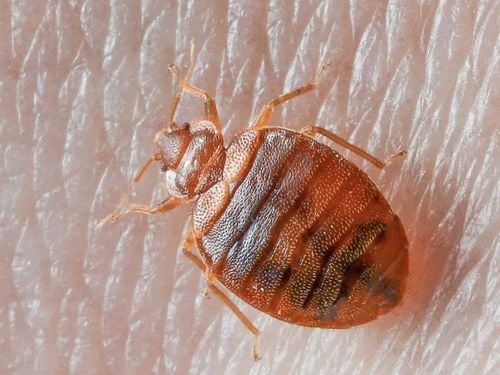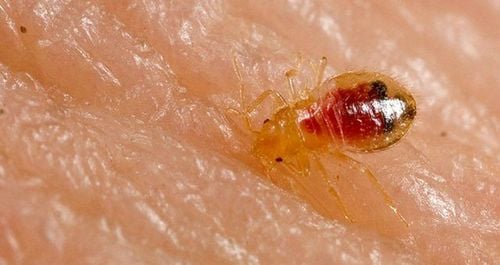This is an automatically translated article.
Bed bugs are small, red-brown parasitic insects that often bite the skin of sleeping people and animals to get their blood. Although bed bugs are not vectors, they can cause other public health and economic problems. This article will provide information to help you recognize the signs of an infestation and how to get rid of bed bugs.1. About Bedbugs
Bed bugs are small, oval, brown insects that feed on the blood of animals or humans. Adult bed bugs have flat bodies about the size of an apple seed. However, after eating, their bodies swell and become slightly red. Bed bugs do not fly, but they can move quickly across floors, walls and ceilings. Female bed bugs can lay hundreds of eggs in their lifetime, each about the size of a grain of dust. Immature bed bugs, called pupae, shed their skin five times before reaching adulthood and need a blood meal before each shedding. Under favorable conditions, beetles can fully develop in as little as a month and produce three or more generations per year.Although annoying, they are not thought to transmit disease. Bed bugs can enter your home undetected through luggage, clothing, used beds and couches, and other items. Their flattened bodies make it possible for them to fit into small spaces, about the width of a credit card. Bed bugs do not have nests like ants or bees, but tend to live in colonies in hiding places. Their initial hiding places are usually in mattresses, box springs, bed frames and nightstands, where they are easily accessible to people to bite during the night.
However, over time, bed bugs can disperse in bedrooms, moving into any crevices or protected locations. They can also spread to other rooms or apartments nearby.
2. Signs of an infestation and how to get rid of bed bugs
2.1. When bed bugs bite Bed bugs are active mainly at night and often bite people while they are sleeping. They feed by piercing their skin and drawing blood through their elongated beaks. Bugs eat for three to 10 minutes to become engorged and then crawl away unnoticed.Initially, most bedbug bites are painless, but later turn into itchy bumps. Unlike flea bites, which are mainly around the ankles, bedbug bites are on any skin exposed during sleep. In addition, the bite does not have a red spot in the center like a flea bite.
People who don't realize they've been bitten by bed bugs may attribute the itching and sores to other causes, such as mosquitoes. To confirm a bed bug bite, you must find and identify the bedbug itself.
2.2. Symptoms Bedbug Bites Bed bug bites can be difficult to distinguish from other insect bites or rashes. In general, symptoms of a bed bug bite include:
Red and often with a darker red spot in the middle Skin Itching Red spots arranged in a straight line or clusters Red spots on face, neck, wings hands and hands Some people will have no reaction to bedbug bites, while others experience an allergic reaction that can include severe itching, blisters or a rash. If you experience an allergic or severe skin reaction to bedbug bites, see your doctor for treatment.
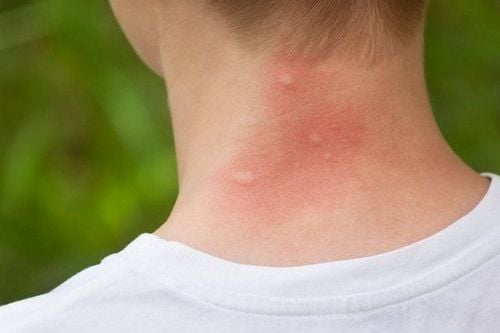
Vết cắn của rệp cắn có thể khó phân biệt với các vết cắn hoặc phát ban của côn trùng khác
Blood stains on your bed sheets or on your pillowcases Black or rusty spots of bedbug droppings on sheets and mattresses, clothing on bedding and walls Bed bugs with feces spots , eggshells, or skin shed in bedbug hiding places Unpleasant musty odor from stink bugs If you suspect an infestation, inspect them carefully for signs of bed bugs or their droppings. Also, check the area around the bed, including inside books, phones or radios, carpet edges, and even electrical outlets. Check your wardrobe, as bed bugs can cling to clothes. If you are unsure of the signs of bed bugs, call an exterminator who will know what to look for.
If you detect signs of an infestation, take steps to eliminate bugs and prevent their return.
2.3. Bed Bug Treatment Bedbug treatment begins with cleaning up where bed bugs live. This should include the following:
Clean bedding, linens, curtains and clothing with hot water and dry them on the highest dryer setting. Place stuffed animals, shoes, and other non-washable items in the dryer and run in the air for 30 minutes.
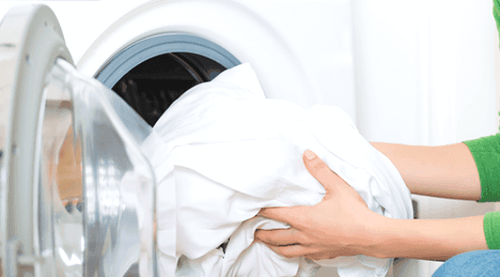
Bạn nên làm sạch bộ đồ giường, khăn trải giường, rèm cửa và quần áo bằng nước nóng và sấy chúng ở chế độ máy sấy cao nhất
2.4. Prevent bites Cover up. Since bed bugs don't tend to get under your clothes, you can avoid getting bitten by wearing pajamas that cover as much of your skin as possible. Insect sprays. Insect repellents designed to protect against mosquitoes or ticks are not very effective against bed bugs. Mosquito net. Bed sheets impregnated with the insecticide permethrin can help protect sleepers from bedbug bites. Old thing. Double-check used bedding and upholstered furniture before bringing them into the house. Check mattress seams for bedbug droppings, and place your luggage on a table or dresser instead of on the floor. Birds and bats. Remove any nearby bird and bat habitats that may be hiding places for bed bugs.
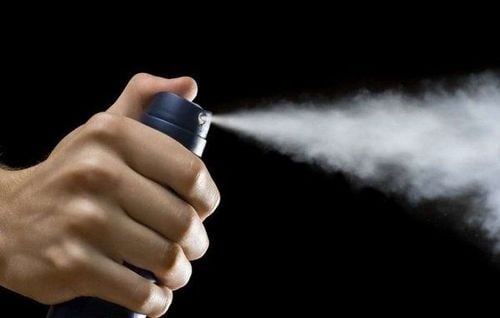
Thuốc chống côn trùng được thiết kế để bảo vệ chống muỗi hoặc bọ ve không hiệu quả lắm đối với rệp
Please follow the website ( www.vinmec.com ) for more information on health care instructions, which we will update regularly.
Please dial HOTLINE for more information or register for an appointment HERE. Download MyVinmec app to make appointments faster and to manage your bookings easily.
Reference sources: webmd.com, mayoclinic.org




